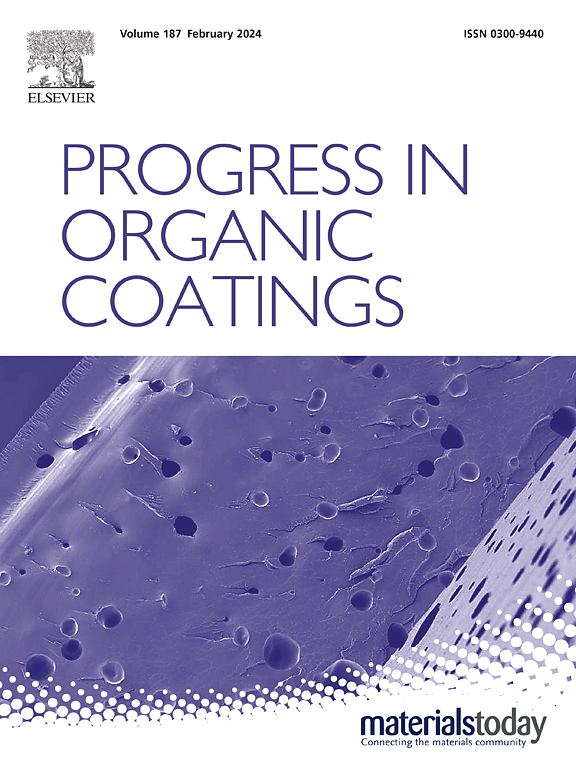Transparent, hydrophobic, self-polishing organosilicon-modified zinc acrylate polymer coating for marine antifouling
IF 6.5
2区 材料科学
Q1 CHEMISTRY, APPLIED
引用次数: 0
Abstract
Considering the increasing efforts toward marine environment protection, the replacement of the conventional self-polishing antifouling coatings with their ecofriendly alternatives is urgently required. The key aspect of this transformation is the augmentation of the antifouling capabilities of matrix resins, which enables a substantial reduction in the use of antifouling agents. Consequently, research on high-performance self-polishing antifouling matrix resins is of utmost importance. Herein, to prepare a multifunctional zinc acrylate polymer for marine antifouling, an acrylate siloxane monomer (ASM) that undergoes free-radical polymerization with acrylate monomers was synthesized by grafting a hydroxyl-containing organosilicon intermediate (RSN-6018) with hydroxyethyl methacrylate. The prepared coating demonstrates excellent transparency in the short term after the addition of the ASM, addressing the issue of the poor compatibility of the organosilicon-modified zinc acrylate polymer. After immersion in seawater for 35 d, the organosilicon-modified zinc acrylate polymer exhibits a stable hydrolysis performance, facilitating the self-polishing of the coating. Because of the presence of the siloxane structure, the coating maintains stable hydrophobicity even after soaking in seawater for 35 d, demonstrating a contact angle of 115.0° ± 1°. The organosilicon-modified zinc acrylate polymer coating has an inhibition rate of up to 99 % against Staphylococcus aureus and exhibits antifouling effects lasting for more than two months in the actual marine environment. Overall, the proposed method offers a high level of innovation and provides an effective and novel approach for preparing modified self-polishing antifouling resins.

求助全文
约1分钟内获得全文
求助全文
来源期刊

Progress in Organic Coatings
工程技术-材料科学:膜
CiteScore
11.40
自引率
15.20%
发文量
577
审稿时长
48 days
期刊介绍:
The aim of this international journal is to analyse and publicise the progress and current state of knowledge in the field of organic coatings and related materials. The Editors and the Editorial Board members will solicit both review and research papers from academic and industrial scientists who are actively engaged in research and development or, in the case of review papers, have extensive experience in the subject to be reviewed. Unsolicited manuscripts will be accepted if they meet the journal''s requirements. The journal publishes papers dealing with such subjects as:
• Chemical, physical and technological properties of organic coatings and related materials
• Problems and methods of preparation, manufacture and application of these materials
• Performance, testing and analysis.
 求助内容:
求助内容: 应助结果提醒方式:
应助结果提醒方式:


